Classic car owner manuals are essential guides for understanding and maintaining vintage vehicles, offering detailed insights into operation, upkeep, and repair, while preserving automotive history and enthusiast culture.
1.1 What Are Classic Car Owner Manuals?
Classic car owner manuals are detailed guides provided by manufacturers, offering model-specific information on operation, maintenance, and repair. They include technical specifications, diagrams, and troubleshooting tips, serving as essential resources for owners to understand and preserve their vehicles. These manuals are invaluable for restoration projects and daily care, acting as a bridge between the car’s past and present, while fostering a deeper connection and appreciation for classic automotive heritage.
1.2 The Importance of Owner Manuals for Classic Car Enthusiasts
Classic car owner manuals are crucial for enthusiasts, providing detailed guidance on maintenance, troubleshooting, and restoration. They ensure authenticity and functionality, serving as invaluable resources for both experienced restorers and newcomers. These manuals also foster a sense of community and knowledge-sharing among enthusiasts, while preserving the legacy of classic vehicles for future generations to appreciate and enjoy.
The History of Classic Car Owner Manuals
Classic car owner manuals have evolved since the early days of automotive history, transforming from basic booklets into comprehensive guides essential for drivers and enthusiasts alike.
2.1 The Evolution of Owner Manuals Over the Years
Owner manuals have transitioned from simple, text-heavy booklets to detailed, visually rich guides. Early manuals focused on basic operation, while modern versions include comprehensive diagrams, technical specifications, and troubleshooting tips. The shift reflects advancements in automotive technology and growing owner demands for clarity and accessibility. Digital formats have further enhanced usability, ensuring these manuals remain indispensable tools for drivers and enthusiasts across generations.
2.2 Notable Examples of Vintage Car Manuals
Notable vintage car manuals include the Ford Model T manual, known for its simplicity and accessibility, and the 1960s Jaguar E-Type manual, celebrated for its detailed illustrations and elegant design. These manuals not only provided practical guidance but also reflected the era’s engineering prowess and design aesthetics, making them cherished collectibles among automotive enthusiasts and historians today.
Key Components of a Classic Car Owner Manual
A classic car manual typically includes technical specifications, detailed diagrams, maintenance schedules, troubleshooting guides, and customization tips, ensuring comprehensive guidance for owners to preserve and enhance their vehicles.
3.1 Technical Specifications and Diagrams
Technical specifications and diagrams are essential components of a classic car manual, providing detailed information about engine types, part numbers, and performance metrics. These sections often include exploded views of mechanical components, wiring diagrams, and dimensional tolerances, aiding in accurate repairs and restorations. Clear visuals and precise data help enthusiasts understand their vehicle’s capabilities and limitations, ensuring authenticity and functionality are maintained during maintenance or modifications.
3.2 Maintenance and Service Schedules
Maintenance and service schedules in classic car manuals outline recommended routines for upkeep, ensuring optimal performance and longevity. They detail tasks like oil changes, tire rotations, and fluid replacements, often specifying intervals based on mileage or time. Adhering to these schedules helps prevent mechanical issues, maintains safety, and preserves the vehicle’s value. Regular servicing also ensures components function as intended, keeping the car in its original condition for years to come.
3.3 Troubleshooting Common Issues
Troubleshooting sections in classic car manuals provide step-by-step guidance for diagnosing and resolving frequent problems. They often list symptoms, possible causes, and repair solutions, empowering owners to address issues independently. This section helps users identify faults early, preventing minor problems from escalating; Clear instructions and visual aids ensure even novice enthusiasts can tackle repairs confidently, saving time and money while maintaining their vehicle’s reliability and performance over the years.
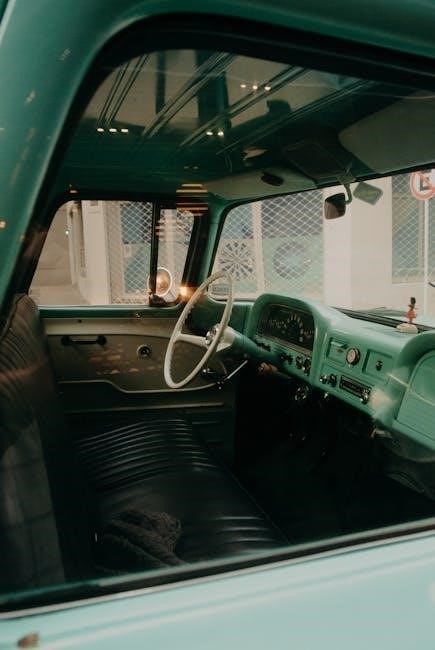
Tips for Maintaining and Repairing Your Classic Car
Regular inspections, proper storage, and using authentic parts are key to preserving classic cars. These tips ensure longevity, performance, and the timeless charm of your vintage vehicle.
4.1 Daily Care and Routine Checks
Daily care involves checking fluid levels, tire pressure, and battery health. Regularly inspect belts, hoses, and brakes for wear. Keep the exterior and interior clean to prevent damage. Monitor temperature gauges and lights on the dashboard. Address minor issues promptly to avoid major repairs. Always refer to your manual for specific recommendations tailored to your classic car’s make and model for optimal maintenance and longevity.
4.2 DIY Repair Guidance for Beginners
Classic car owner manuals provide step-by-step repair guides, making DIY projects accessible for beginners. Start with simple tasks like oil changes or replacing air filters. Use the manual’s diagrams to identify parts and tools needed. Always follow safety precautions and manufacturer recommendations. Troubleshooting sections help diagnose common issues, while maintenance schedules ensure timely repairs. Joining online forums can also provide additional support and tips from experienced enthusiasts.

The Role of Owner Manuals in Car Customization
Owner manuals guide enthusiasts in modifying classic cars safely and authentically, offering specifications, diagrams, and instructions to ensure customizations align with the vehicle’s original design and functionality.
5.1 Understanding Modification Options
Classic car owner manuals are essential resources for understanding various modification options. They provide detailed insights into performance upgrades, aesthetic changes, and technical adjustments. These manuals help enthusiasts make informed decisions by outlining compatibility and authenticity considerations. By adhering to the guidelines, car owners can ensure that modifications enhance the vehicle’s value and performance while preserving its original charm and historical significance.
5.2 Ensuring Safety and Compliance
Classic car owner manuals play a crucial role in ensuring safety and compliance during modifications. They provide guidelines for adhering to original specifications and regulatory standards. By following these manuals, enthusiasts can avoid safety hazards and legal issues. Detailed instructions help maintain the vehicle’s integrity while ensuring compliance with local laws and safety regulations; This ensures that modifications are both safe and legally permissible, preserving the car’s value and operational reliability.
Storage and Preservation of Classic Car Manuals
Store classic car manuals in a cool, dry place, away from direct sunlight. Use protective sleeves or folders to maintain condition and ensure longevity for future reference.
6.1 Best Practices for Storing Vintage Manuals
Store vintage manuals in a cool, dry environment to prevent moisture damage. Use acid-free sleeves or folders to protect pages from yellowing. Avoid direct sunlight, as it can fade ink. Keep manuals flat to maintain their shape and prevent creasing. Consider using archival-quality storage boxes for added protection. Label the manuals clearly for easy identification and organize them by make or model for quick access.
6.2 Digitizing Your Manual for Future Reference
Scan your vintage manual at high resolution to preserve its contents digitally. Use a flatbed scanner for crisp images and save as PDF for universal access. Organize files with clear names and store them in cloud platforms like Google Drive or Dropbox. Create backups on external hard drives for added security. Consider sharing digital copies with classic car communities or workshops for collaborative reference. This ensures your manual’s knowledge endures for generations.
Legal and Safety Considerations
Adhering to legal and safety standards is crucial when restoring or modifying classic cars. Always follow guidelines to ensure compliance and protect both drivers and the vehicle.
7.1 Adhering to Safety Guidelines
Adhering to safety guidelines is paramount when working with classic cars. Always follow the manufacturer’s recommendations and regulatory standards to ensure safe operation and maintenance. Regular inspections of brakes, tires, and electrical systems are essential to prevent accidents. Wearing proper protective equipment, such as gloves and goggles, is also crucial during repairs. Neglecting safety protocols can lead to serious injury or damage, undermining the joy and legacy of classic car ownership.
7.2 Legal Requirements for Modifications
Modifying a classic car requires adherence to legal standards to ensure compliance with safety and emissions regulations. Research local laws regarding engine swaps, exhaust systems, and interior alterations. Documentation and approval from authorities may be necessary for significant changes. Non-compliance can result in fines or registration issues. Always ensure modifications align with legal frameworks to maintain roadworthiness and avoid penalties, preserving both the car’s functionality and its classic appeal.
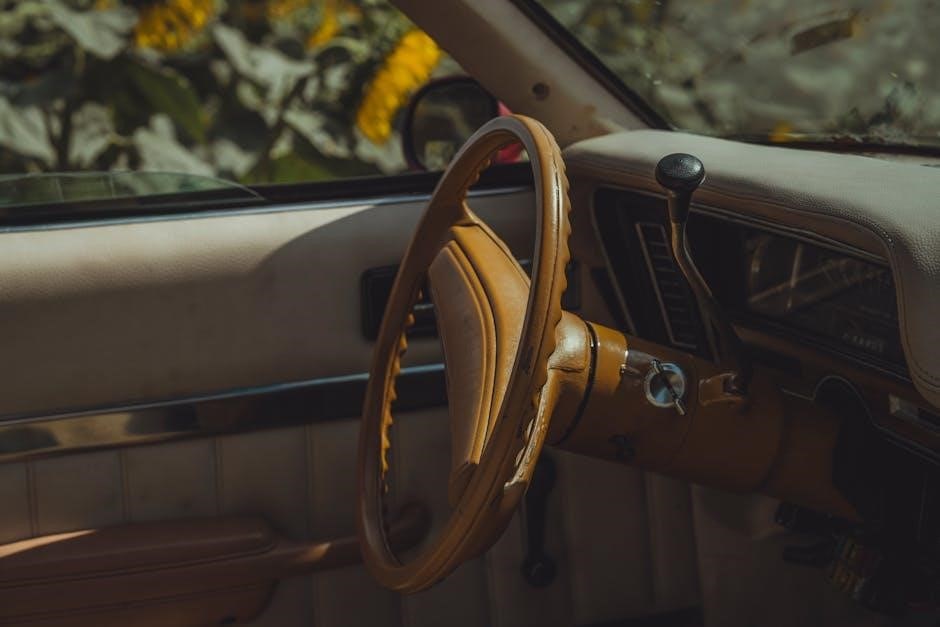
The Emotional Connection to Classic Car Manuals
Classic car manuals evoke nostalgia, connecting owners to their vehicle’s history and personal journey, fostering pride and a deep emotional bond with their cherished possession.
8.1 Nostalgia and the Joy of Ownership
Classic car manuals often stir deep nostalgia, reminding owners of their first encounters with the vehicle or the memories created during restoration. The joy of ownership is amplified by the manual’s retro design and detailed instructions, serving as a tangible connection to the car’s history. For many enthusiasts, these manuals are treasured keepsakes that evoke pride and a sense of timeless tradition, enriching the ownership experience.
8.2 Passing Knowledge to the Next Generation
Classic car manuals serve as invaluable educational tools, bridging generations by sharing mechanical insights and historical context. They empower younger enthusiasts to understand and appreciate vintage vehicles, fostering hands-on learning. Owners often find joy in passing down their knowledge, ensuring the legacy of classic cars endures. These manuals not only preserve technical expertise but also strengthen the emotional connection between generations, keeping the passion for classic automotive heritage alive and thriving.
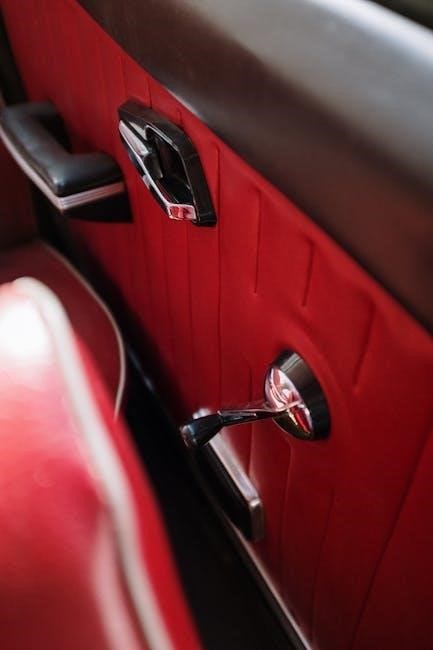
The Future of Classic Car Owner Manuals
The future of classic car owner manuals lies in digital archives, interactive guides, and enhanced accessibility, ensuring timeless knowledge adapts to modern demands while preserving heritage.
9.1 The Rise of Digital Manuals
Digital manuals are revolutionizing access to classic car information, offering enhanced searchability, multimedia content, and instant updates. They reduce physical storage needs and environmental impact, while ensuring timeless knowledge remains accessible to future generations, blending convenience with preservation of automotive heritage.
9.2 Balancing Tradition with Modern Technology
Classic car manuals are evolving by combining timeless mechanical knowledge with modern digital tools, such as 3D diagrams and interactive guides. This blend preserves the heritage of vintage vehicles while enhancing accessibility and accuracy for today’s enthusiasts and restorers, ensuring a seamless connection between past and present automotive practices.
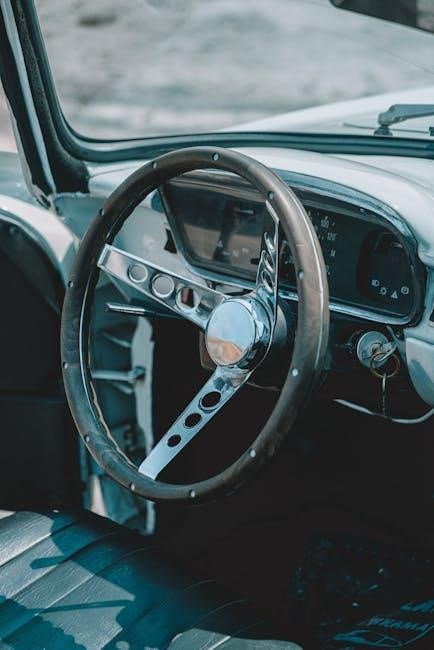
Resources for Classic Car Enthusiasts
Classic car enthusiasts can access libraries, clubs, and online archives for comprehensive guides, rare documents, and expert advice, ensuring reliable information for restoration and maintenance efforts.
10.1 Where to Find Rare or Lost Manuals
Rare or lost classic car manuals can be found through specialized auctions, vintage car forums, enthusiast clubs, and libraries. Many communities share digitized versions online, while some sellers offer reprints. Additionally, car museums and heritage centers often archive original documents, making them accessible to researchers and restorers. Networking within the classic car community can also lead to discovering hidden gems or scanned copies of elusive manuals.
10.2 Online Communities and Forums
Online communities and forums dedicated to classic car enthusiasts are invaluable resources for sharing knowledge and accessing rare manuals. These platforms allow members to exchange information, post queries, and collaborate on restoration projects. Many forums host scanned versions of manuals, while others provide repair tips and advice from experienced owners. They serve as hubs for connecting with like-minded individuals and preserving the legacy of classic cars through shared experiences and resources.
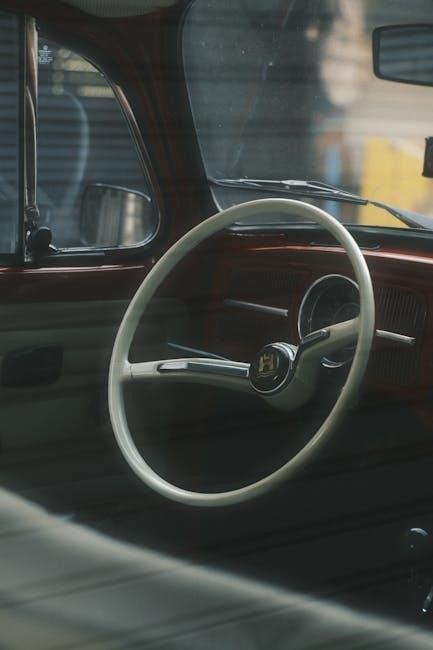
Preserving the Legacy of Classic Cars
Classic car owner manuals play a vital role in preserving automotive history by providing historical context, maintenance tips, and authenticity, ensuring vintage vehicles remain operational and cherished for generations.
11.1 The Role of Manuals in Car Restoration
Classic car owner manuals are indispensable in restoration projects, offering precise technical details, original specifications, and step-by-step guidance. They ensure authenticity, helping enthusiasts restore vehicles to their former glory while maintaining historical accuracy and functionality. These manuals provide invaluable insights, enabling restorers to address mechanical and cosmetic issues effectively, preserving the car’s heritage for future generations to appreciate and enjoy.
11.2 Educating New Enthusiasts
Classic car owner manuals serve as vital educational tools for newcomers, providing foundational knowledge about vehicle mechanics, maintenance, and history. They demystify complex processes, offering clear instructions that help novice enthusiasts develop practical skills and a deeper appreciation for classic cars. By bridging the gap between generations, these manuals ensure the passion for vintage automobiles endures, fostering a community dedicated to preserving automotive heritage;
Classic car owner manuals are indispensable resources for enthusiasts, offering insights into maintenance, repair, and the rich history of vintage vehicles. They serve as both practical guides and cherished mementos, connecting owners to their cars on a deeper level. As the automotive world evolves, these manuals remain vital for preserving tradition, educating newcomers, and ensuring the legacy of classic cars endures for future generations to appreciate and enjoy.
